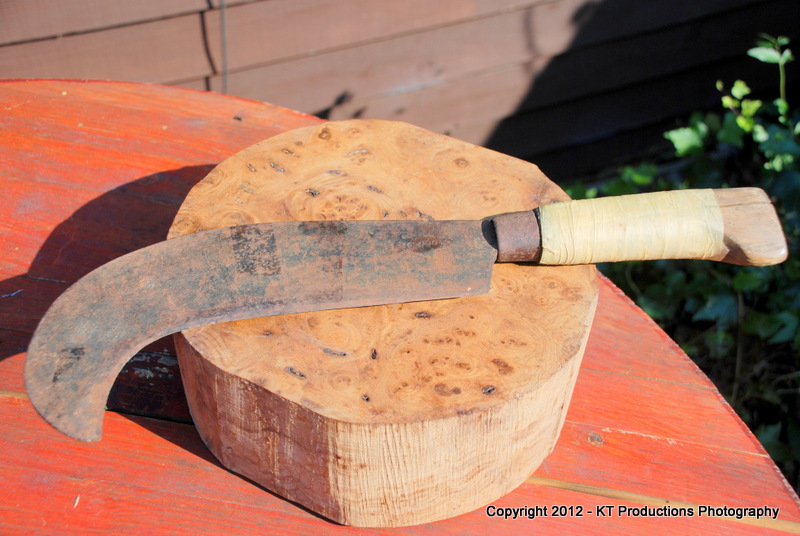disco_monkey79
Established Member
- Joined
- 5 Oct 2009
- Messages
- 681
- Reaction score
- 48
Like a spanner, I forgot to take a pic, but will try to remember tonight...
In the meantime... I have an old cleaver, given to me by my grandfather, so it has some sentimental value. The handle is split, and I'd like to replace it but have no idea how to go about it.
The existing handle has been slid on to the tang, with the end of the tang then beaten so it forms a rivet. This is the bit that stumps me. Do I need to find a smithie who'll heat the tang, and beat it flat again? Or is there a way around this?
I can;t simply make a handle in two parts and glue it around the tang, as the top of the handle is sheathed in a metal "cup", that I think would make it impossible.
Anyone ever attempted repair on something like this? Will try to get a pic up asap, to better illustrate the problem.
Many thanks
In the meantime... I have an old cleaver, given to me by my grandfather, so it has some sentimental value. The handle is split, and I'd like to replace it but have no idea how to go about it.
The existing handle has been slid on to the tang, with the end of the tang then beaten so it forms a rivet. This is the bit that stumps me. Do I need to find a smithie who'll heat the tang, and beat it flat again? Or is there a way around this?
I can;t simply make a handle in two parts and glue it around the tang, as the top of the handle is sheathed in a metal "cup", that I think would make it impossible.
Anyone ever attempted repair on something like this? Will try to get a pic up asap, to better illustrate the problem.
Many thanks



































